Genre: Action Developer: Core Design Publisher: JVC Musical Industries Players: 1 Released: 1993
Back when the Sega CD was a newborn, it didn’t have a lot in the way of games that showed off what it could actually do. Scaling and rotation weren’t seen much, and most of what came out was basically a cartridge game with added CD music, and perhaps some cinemas along the way. During this early “CD cart” period, Core Design, a company that would later really make the Sega CD hardware shine, offered up an action platformer called Wolfchild in early 1993, which was a port of the Amiga version from the previous year. This game also came to the Genesis in ’93, dropping the CD extras, and leaving the core game to stand on its own. So the question is, does the game sink its fangs into you, or is it all bark and no bite? Read on.
Your father, Kal Morrow, is the world’s foremost authority on biogenetic science. Unfortunately, while you were away, he was kidnapped by the group, CHIMERA. Led by Karl Draxx, Draxx is out to take over the world using mutated soldiers and came after your father to find his research and further that goal. Yet despite Draxx’s efforts, he failed to locate where Kal had hidden away his most valued project… Project Wolfchild. When you return home, you find the lab in ruins, your father gone, and the odds of getting him back alive to be less than good. As a human, you don’t stand a chance. But you know where Project Wolfchild is, and with it, you can become more than human. You can become powerful enough to strike back at Kal’s captors and bring him home. It’s a risky venture, but you step into the chamber in your father’s lab, and allow the project to change you, turning you into a lycanthropic warrior. Now it’s time to save your father, stop CHIMERA, and kill the group’s sociopathic leader, Karl Draxx.
Graphically, Wolfchild does a solid job in conveying its world. The animation on the characters, more often than not, is rather smooth, with a good number of frames given to running, attacks, the transformation of Saul into a wolfen beast, and the various enemies and insects that inhabit the stages. Whether it’s the soldier you just killed, or the crate you just punched, the majority of the game has a nice fluidity to it. That’s not to say that everything does though, as there are some enemies that are oddly under animated (such as the snake-like soldiers in the forest). The use of color on the characters is done pretty well, with nice gradients and detail touches, though at times the color choices seem a little dulled down. Designs for the enemies range from generic-looking soldiers and little robots to more creative insect warriors and a shrimp-looking boss. But regardless of the creativity involved, they all generally come off looking fine more often than not.
The stages in the game tend to vary in several ways. Besides being in different locales such as an underground base, a forest, and a flying ship, they also vary in how well they were handled. Some, like the flying ship, have good detail, a fair amount of parallax to give it depth, and so forth. And while the sky is a bit grainy with how the gradation was handled, the stage generally still looks good overall. But other stages, like one of the base stages, is ramps and catwalks in front of a background of pipes and black space. What’s there looks all right really, but it feels empty when compared to the ship, the ruins and even the forest. Even so, the stage visuals are still good overall, and the graphics as a whole do come off well, making for a fairly good-looking game.
The audio for Wolfchild is a mixed bag. The sound effects are pretty average fair, with some sound effects being fine (explosions, the wolf howl, etc.), and others that are particularly wimpy (punches in human and werewolf form, enemies being hit, enemies firing, etc.). None of them are ear offending, but the quality goes up and down noticeably. Another issue is that their use comes off as a bit sporadic. While you have some for punching, enemies being hit and such, other common actions like jumping, landing, and even the engines of the big ship, have no sound effect at all. This can make for oddly quiet stretches in the game that honestly, shouldn’t have been that way. However, on the flip side of this aural coin, is the music. Done by Matt Furniss, it uses the same Krysalis sound engine from games like Alien 3, G-LOC, and Galahad (all of which, he worked on the music for), giving it a familiar feel. This also means the instruments and such are good quality, which is complimented by solid compositions. Catchy, poppish and synthy beats that contain hints of hip-hop, rock and R&B at times, good use of stereo… typical Matt Furniss quality. So while the sound effects are on the lacking side, the music helps pick up some of their slack.
The gameplay is pretty straightforward, but it’s not archaically so as you trek through locations that are all laid out in the style of a platformer. You’ll make your way along tree branches in the forest, run through tight passages in a bug-riddled underground ruin, fight in the sky on an airship… all while avoiding traps and jumping from one platform to another in these slightly maze-like zones. Throughout these areas, there are score and energy capsules to be found, score and extra life balls to locate (collect lettered balls that spell “BONUS” and “EXTRA”), hidden areas to discover, and powerups that will change your weapon when you’ve transformed. Speaking of which…
As a human, you can punch, jump, and drop a grenade that will either kill or hurt all the enemies on-screen, depending on the enemy. However, if you get your energy level up high enough, you’ll transform into a more powerful man/wolf warrior. You can still jump and use the grenades in this form, but now your punches hurl energy balls at the enemies. These energy balls can be a single, forward-moving ball, a powered up to a three-way spread, or an energy boomerang (among other things). You’ll use all these attacks on various enemies and obstacles that fly, shoot lasers, pop up out of the ground, swing like a pendulum, and more, all so you can face the bosses at the end of each area.
So, what’s wrong with this picture? Well, aside from the sound effects being kind of meh overall, Wolfchild’s main problems come in one main form… that Wolfchild doesn’t do anything truly interesting. While the visuals are nice, and the music is good, the level layouts are pretty easy to get through and are pretty bland. The gameplay doesn’t exactly spice things up either, as nothing really shows a lot of creativity to liven things up or vary the gameplay from level to level. Even the werewolf idea feels tacked on, and not really an integral part of the game. In fact, the werewolf aspect feels completely out of place here, seeing as nothing about the werewolf mythos is used. This trait could have easily been replaced with a hundred other ideas to explain your character’s powering up, and the game wouldn’t be affected in the least. That’s how tacked on its big selling point (and source for its name) feels.
On the minor side, there are a number of niggling little items to go over. First, is that there are areas in this game that truly drag on (such as the elevator stages inside the base, the boss fight at the end of the ruins, riding some of the robots, etc.). The enemies in these areas pose no challenge, as they’re simple to dispatch, but they just keep coming… and that’s when there are enemies to even fight. Next, there’s some slowdown at times on the later levels, but with this kind of game, it doesn’t really make for unfair damage coming about. It’s just an annoyance. Another bit, is that there’s some respawning for some enemies, which can get annoying after you’ve already cleared out a section, only to step on something you’d already triggered or killed. And lastly, there’s the infamous “bounce of death,” where the game gives you basically no moment of invulnerability after being hit. Instead, it bounces you from one harmful spot to another, hurting you each time. This can lead to some very cheap deaths or having to waste a valuable grenade to try and stop it while it’s happening.
On a final note, you might be wondering how the cart version stands up to the Sega-CD version. Well, the CD version obviously has the advantage of CD-quality music, but it also has more and better sound effects, and different music compositions from the cart version. Of course, this is countered a bit by the truly God-awful cinemas. Badly drawn, odd voices, iffy animation, weird pauses between sections… they’re just silly, in a bad way. The CD version has two more levels over the cart, and the cart also has a number of its remaining levels altered in terms of layout and length (though you will see areas that are the same in both). The cart does gain a little advantage by adding a bit of parallax to the forest level’s ground, and of course, the lack of load times. Lastly, for some reason, the cart version only lets you send one energy ball at a time, whereas the CD version allows for two. This makes the cart version harder, but also a bit more tedious when making your way through the longer fights. With all that said, it still plays much like its CD brother otherwise, even if it was trimmed down.
So what can be said about Wolfchild? Well, it fails to elevate itself to the tier of action platformers like Mega Turrican, Alien 3 and Contra: Hardcorps. It’s not that any one area is game-ruiningly busted, as the control and hit detection are done well. It’s just that it all gets dragged down a bit when everything outside of those areas is added in. Yes, the visuals and music are nice, but the action never really gets intense, and the levels aren’t that interesting in layout and design. It took the potentially cool werewolf premise and did nothing with it, resulting in the game being only a little above a run of the mill action platformer, thanks in part to some extra visual/aural polish here and there. It’s worth playing if you can find it cheap… especially the Sega CD version, which I’d rank a point higher thanks to more being included in the game, and what I find to be the better soundtrack. Just don’t go in expecting a game that rivals the Genesis’ greats in this category.
SCORE: 6 out of 10


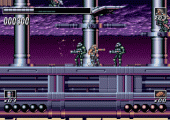
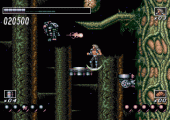
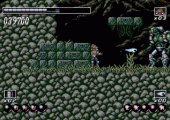
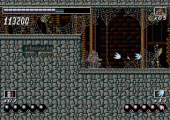
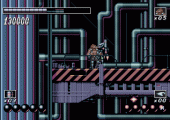
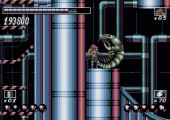
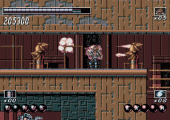
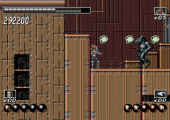
Recent Comments